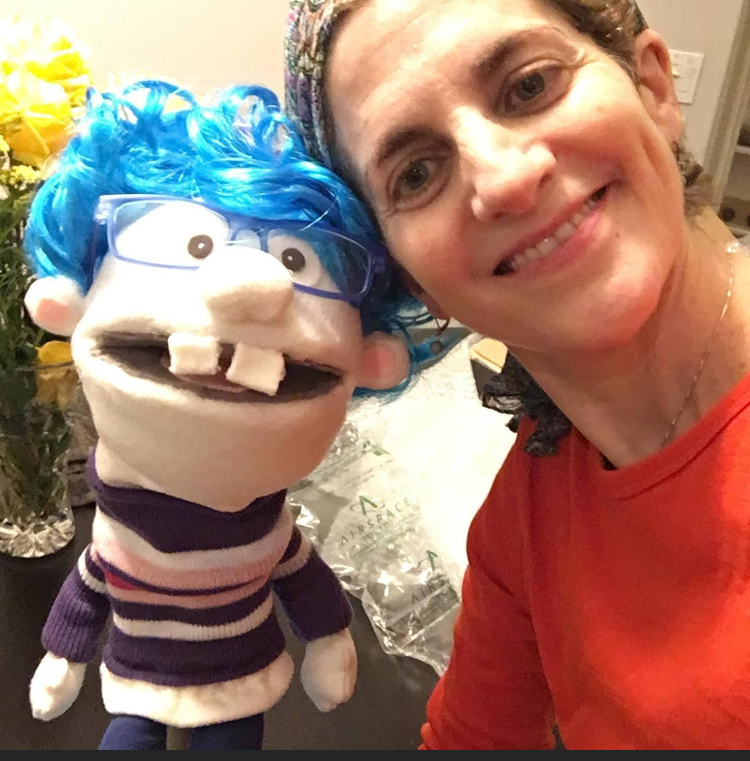Delaying Gratification: An Essential Skill for Autistic Children to Learn
Delaying gratification is an essential skill for autistic children to learn in order to help them learn new skills.
Delaying gratification... Autistic children... Hmmm. Might sound like an oxymoron, right?
Well, imagine this. An autistic child is in a physical therapy session. You choose the age. Perhaps they’re working in an all-fours position (quadruped), sitting or standing, or maybe doing a transition from one position to another. Maybe they’re learning to toss a ball; and, instantly, this sweet adorable bundle of cooperation no longer wants to participate. They are done. Like, this second. Right now. Finished. The child may throw their head back, lay on the floor, roll, kick, scream, or just run off. And, you’re wondering why you haven’t chosen this great coping mechanism yourself at moments when you just don’t have an ounce of patience left.
 It can happen quite often during a physical therapy session: a full-blown meltdown. After all, physical exertion requires effort, focus, hard work, and using muscles that might not be exactly proficient. I honestly know the feeling. It’s something like sitting through a corporate meeting and feeling like you’d rather be at the beach. Or maybe you’ve been in a workout when you wanted to be on the couch. But there might be a tool you can use and one you can teach: delayed gratification. Delaying gratification while learning new skills for autistic children can be a game-changer that may minimize meltdowns and teach cooperation and patience. Let’s see why.
It can happen quite often during a physical therapy session: a full-blown meltdown. After all, physical exertion requires effort, focus, hard work, and using muscles that might not be exactly proficient. I honestly know the feeling. It’s something like sitting through a corporate meeting and feeling like you’d rather be at the beach. Or maybe you’ve been in a workout when you wanted to be on the couch. But there might be a tool you can use and one you can teach: delayed gratification. Delaying gratification while learning new skills for autistic children can be a game-changer that may minimize meltdowns and teach cooperation and patience. Let’s see why.
Learning new skills is difficult. It is particularly difficult for autistic children and those with low muscle tone, neurological differences, or emotional challenges. Sometimes learning a new skill can be downright painful. Using muscles that don’t want to cooperate or are a bit lazy or non-communicative with the higher brain can demand more effort, practice, and challenge.
So you may be wondering, “Where does delayed gratification come into play with all of this?” Delaying gratification may help to improve long-term success, ease of learning new skills, and encourage changes in behavior. By delaying the strong desire for rest, the ability to hold on, work hard, and manage emotions is brought forward. Where the amygdala (lower brain center), fight or flight response, took the front seat, it is now pushed to the back for a choice made by the frontal lobe (higher brain). We then replace fight or flight with focus, patience, planning, and execution. And, this can be taught very early with young children, toddlers, and babies.
Let’s look at an example of an autistic child who is learning to kick a ball.
- I start by explaining to the child that we are going to kick the red ball and then walk around four colored spots.
- Then I roll the ball to the child and he misses.
- We try again and he makes contact with the ball. But, at this point, he runs off to do something else.
- I bring him back or encourage him to return to practice kicking and he begins to cry and whine.
- I now have two choices:
1) I can stop the activity for instant gratification or
2) I can tell him we are going to roll the ball two more times and then stop.
In another example, I may have a child who is standing or kneeling while working on a task at a desk. She begins to melt down. Again I have a choice. I can stop for instant gratification or I can count to ten, make the sign for “down please” with my hands, and then lower the child to a more comfortable place to take a break.
By delaying gratification the child may:
1) do the skill a few more times or for a bit longer
2) learn to manage emotions knowing the gratification will be coming soon.
This means more effort from the child and more grit and tolerance for discomfort down the road. Remember that time provides perspective. It also provides a space to manage emotions instead of allowing emotions to manage us.
There is no magic pill to teaching delayed gratification, but it is easier to learn if it is started as soon as possible and as young as possible. However, even older children and yes, adults, can learn to delay gratification and thus spend more time doing something that may be difficult: paying attention, reading a book, learning to ride a bike, finishing schoolwork, sitting at the dinner table or mowing the lawn.

Below are some key tips that may help you when delaying gratification.
Remember: We can learn to do hard things. Autistic children can too.
Timing is important, so be on alert!
Pay attention to signs and signals that show the beginning of discomfort. At this point, you may want to offer the child a choice, or the chance to ask for a break. Don’t wait for a full tantrum to explode just to complete a task. Take a break and return to it as soon as possible. A bubble-blowing break can allow everyone to take a few deep breaths before continuing.
Modulate your voice and choose your wording
Watch your voice and listen to your words. Are you getting frustrated? Is your voice getting too strong, too loud, too harsh? Sometimes frustration from our children can trigger our reactions. So, take a breath and choose how you speak to your children. Saying something like “I can see this is difficult for you. Let’s take a break and try again” may be more effective than “You’re being lazy, try harder!” Remember that you are role modeling calm despite the difficulty.
Offer choices
Consider that a new experience can trigger a fight or flight response. So try offering choices. Which shirt would you like, the red or the white? Would you like to play kickball or basketball? Would you like to wash dishes or clean off the table? “No” is not in the offering, but providing choice encourages children to learn to advocate for themselves and ask for what they need. Even non-verbal children can be offered choices through visual signs.
Counting and rhythm
When your child is getting to the end of his or her rope, try counting. This lets them know the difficulty is coming to an end. Rhythm also acts as a great modulator and emotional regulator. You can count, use a metronome, or sing a song to extend the effort just past the comfort zone. This can help grow attention, effort, and tolerance to longer periods.
Visual prompts or signs
Using a sign or sign language to allow a child to choose, or alert them to a change along with verbal prompts can provide a sense of control for the child. For example, allowing them to hold up a green circle when they are calm, a yellow circle when feeling discomfort, or a red circle when they are mad or frustrated can allow a choice or action to be taken to respond to the current situation. This works well with school-age children but color codes and icons can be used well with much younger children as well.

Allow discomfort
Remember, we are not trying to squash feelings, but to help children manage their emotions. We may want to start with ourselves. Taking a pause to notice how we feel and addressing it with compassion can go a long way toward offsetting a full meltdown where things may get out of control. This can then help with delaying gratification. In other words, it’s okay to sweat, work hard, put in the effort and do hard things. It’s okay not to enjoy those things. But with delayed gratification, we come to a point where we choose acceptance, enjoyment, or enthusiasm with each activity rather than resistance.
Use clear measurable rewards
We all respond well with rewards. But working for an hour for ice cream may not be as effective as earning five icons for a timed two-minute break with a pre-chosen reward. Have your child select rewards before starting the activity. Let them know and let them see each time they earn a token. Then time the reward when it is earned. When the time is up you return to the activity that needs practicing. And remember, we are modifying behavior. So, when your child is not at their best, put those tokens up faster and you might see change come quicker.
Consistency is key
To progress, we must be consistent. Consistent with the activity we are learning (though we can change it up a bit to make it more interesting), consistent with scheduling, and consistent with how we respond. Don’t give up on a tough activity. No one makes it to Carnegie Hall without a lot of practice. Your child can learn amazing skills with consistency, patience, and a little bit of faith.

Ilana Danneman, PT
Ilana (or “Miss Ilana” as her clients refer to her) is a pediatric physical therapist and the owner of Special Needs in Motion. She works in Atlanta, Georgia and produces a bimonthly special needs podcast for parents, teachers and therapists. Ilana enjoys, writing, walking, biking, working with special needs children and their families and podcasting!




